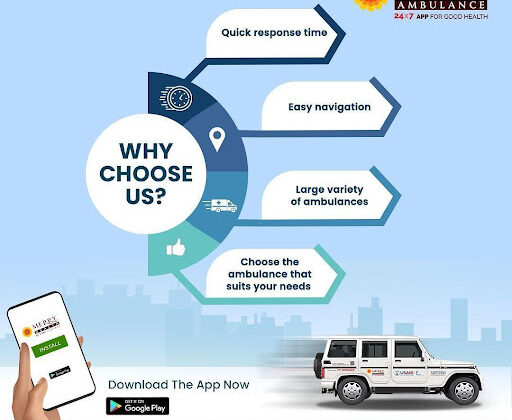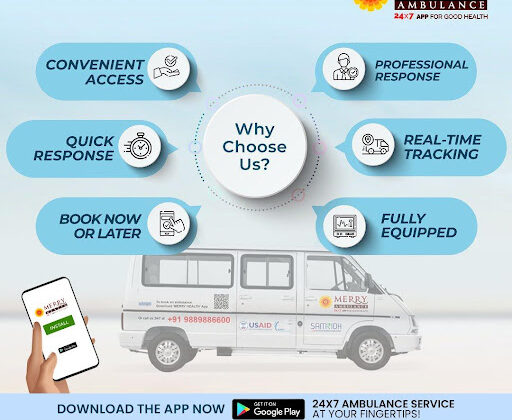Why Does India Urgently Need an Ambulance Booking App?
Emergency medical services have always been led by ambulances. The latest models of these basic life support ambulances are much superior to the older ones, which were barely meant to transport the patient to the closest hospital. Today, it is common to see ambulances of all sizes and shapes, equipped with a variety of services like oxygen, intravenous infusions, heart defibrillators, splints, medications, and more. In fact, modern ambulance systems like emergency ambulance booking are outfitted with radios, location-tracking technology, and a lot more in addition to numerous pre-hospital emergency facilities.
Not all appears to be well, though, when it comes to making sure that every patient’s emergency medical needs are met. The current infrastructure has some shortcomings that are inherent. Let’s talk about it and see if a digital platform specifically for booking ambulances will help handle the issue.
Here are some of the challenges that people face while availing ambulance services and how an online ambulance booking platform can streamline the inefficiencies.
Consistent Challenge in Booking Ambulance at the Right Time
A life-threatening emergency is ideally attended to by an ambulance in eight minutes or less. However, there are times when it takes extremely long for an ambulance to arrive. Additionally, users don’t have visibility and clarity into whether the ambulance is arriving or not. With the help of an online platform for booking an ambulance, people have a definite idea of how soon the ambulance will arrive. A modern medical emergency app’s GPS tracker allows users to find local ambulances that are accessible and call for one in the shortest possible time. Real-time GPS tracking also makes it possible to track the location and anticipated arrival time of an ordered ambulance to bring in reliability and transparency in the system.
Lack of Clear Communication with the Driver
Patient safety is at risk when ambulance drivers are unable to effectively communicate for a number of reasons. Patients who use an internet portal to book an ambulance immediately receive the contact information for the ambulance driver, ambulance vehicle details and real time location, allowing for easy communication. Interacting with the ambulance support staff is also beneficial. Real-time GPS tracking also makes it possible to track the location and anticipated arrival time of an ordered ambulance.
Rigid Selection of Ambulance Type
When you book an ambulance, sometimes, you get no option of choosing the right type of ambulance like patient transport, basic life support ambulance, and advanced life support ambulance. Online ambulance booking service provides flexibility to choose the shape, size and equipment required in the ambulance based on the nature of emergency.
Although technology is on the side of individuals who might require these emergency medical services at any time, sadly, the environment is not! Some of the available ambulances are reserved for non-emergency situations, such as moving a patient from one medical facility to another or returning a patient who has been discharged home. This obviously reduces the ambulance-to-person ratio even further and distorts the role of basic life support ambulance.
However, the WHO advises an ambulance to arrive within 8 to 10 minutes of a call. This suggests that an ambulance must arrive at the patient’s location less than 10 minutes after the call for one has been placed. The response time is far from optimal because of the general delay in emergency services. Extreme delays are also caused by the state of the roads, the infrastructure, and other factors including heavy traffic and a lack of designated lanes for emergency vehicles.
Given the dire state of affairs at hand, it is obvious that the nation’s capital and the entire nation requires a ground-breaking initiative that will make emergency medical services available to the general public at their fingertips.
It appears that an emergency ambulance booking app/platform can achieve this goal. An app specifically designed for booking ambulances will help put the power back in the hands of the users and patients, as has been seen in the case of mobile-based cab services.
Such an app has the potential to significantly impact how people access emergency medical care, as well as to be tremendously helpful to doctors. Given that the patient will be attended to in the shortest amount of time feasible, he/she can be provided with swift and efficient medical care, allowing them to be in a stable or comparably improved state when they ultimately arrive at the hospital.
Categories
Recent Posts
- The Most Effective Ambulance Services for Instant and Comfortable Service
- Significance of Ambulances During Critical Scenarios
- Merry Ambulance – Ambulance Booking Application for Emergencies
- Find Out What Are The Major Actions Performed By Emergency Ambulance Services
- Merry Ambulance – Book an Advanced Life Support Ambulance Near You




